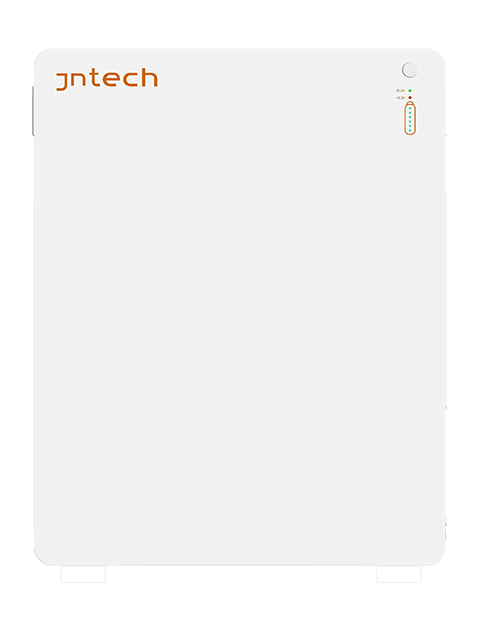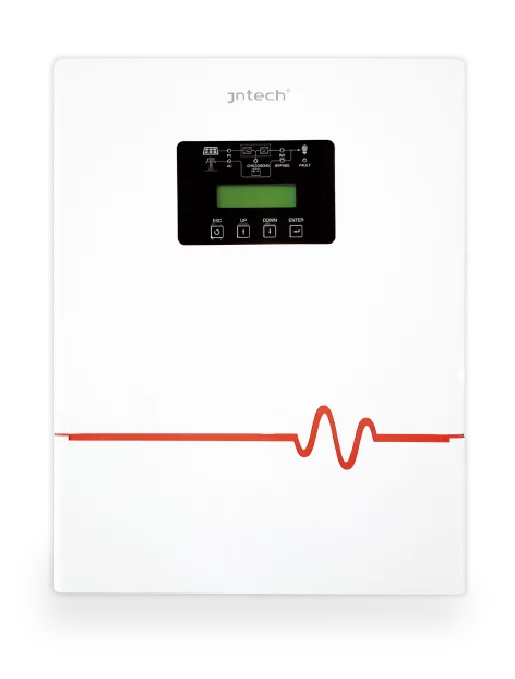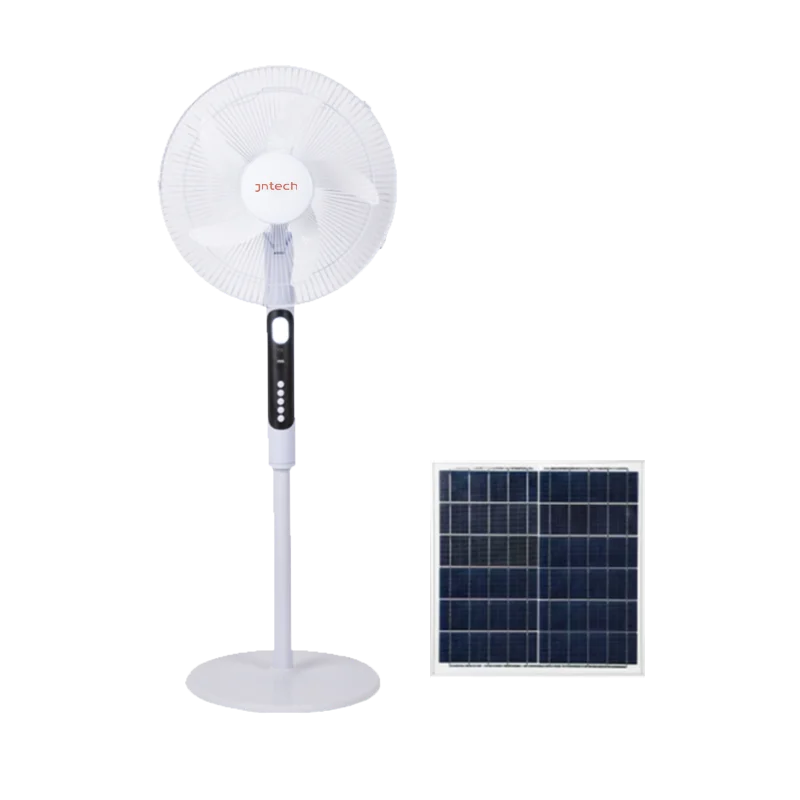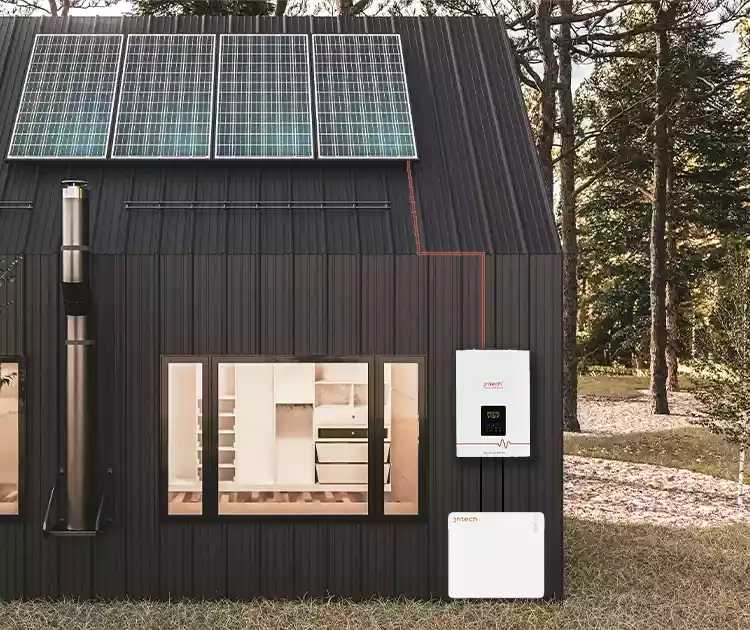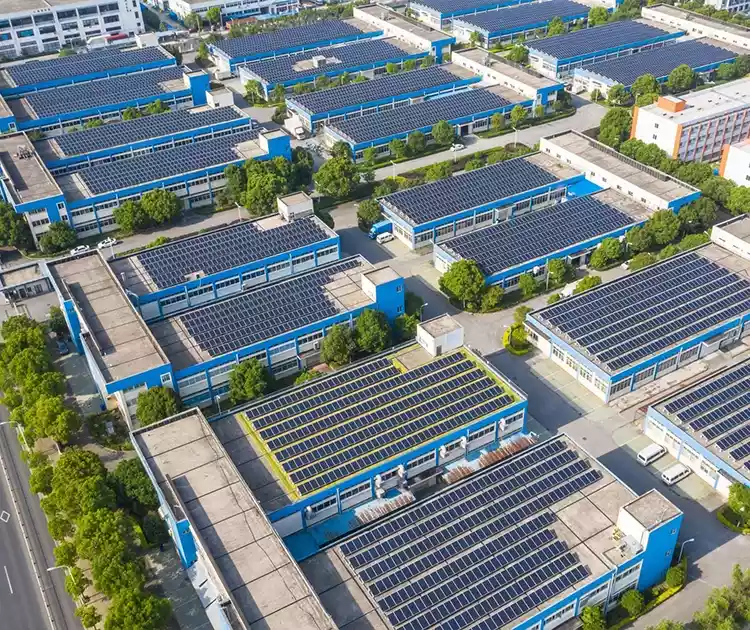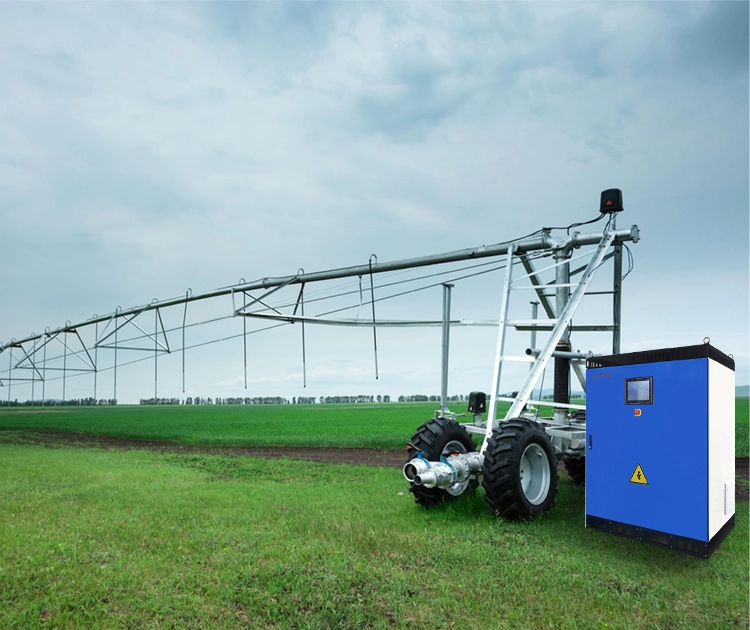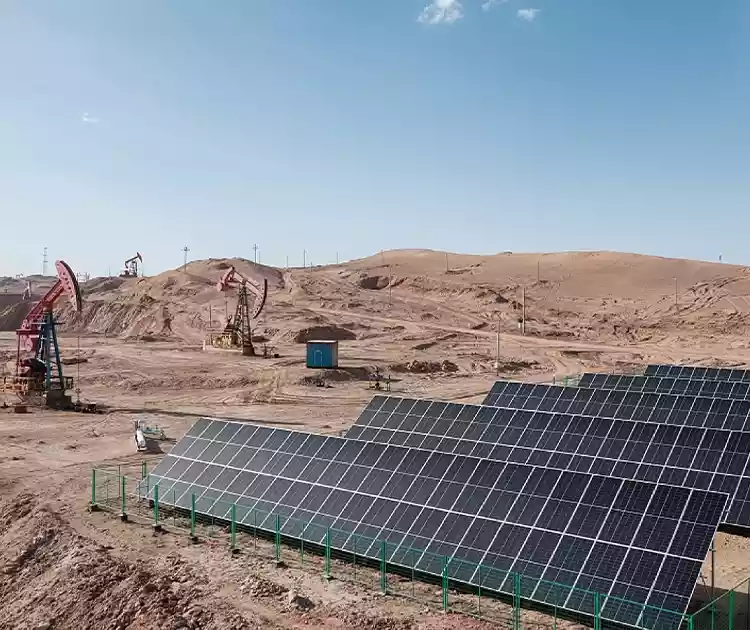O que um inversor solar faz?
Data de lançamento: 09/06/2025
Com a transformação da estrutura energética global, a energia solar como fonte de energia limpa e renovável tem gradualmente atraído ampla atenção. Um dos principais dispositivos em um sistema de energia solar é o inversor solar, que desempenha um papel importante na conversão de energia solar em eletricidade utilizável. Este artigo apresentará em detalhes o papel dos inversores solares e sua importância nos sistemas de geração de energia solar.
Funções básicas dos inversores solares
Inversores solares são dispositivos que convertem a corrente contínua (CC) gerada por painéis solares em corrente alternada (CA). A eletricidade gerada por painéis solares é corrente contínua, enquanto a maioria dos equipamentos domésticos e industriais requer corrente alternada. Portanto, a principal função do inversor é converter corrente contínua em corrente alternada, tornando-o adequado para uso residencial, comercial ou conexão à rede elétrica.
Como funciona um inversor solar?
Os painéis solares convertem a luz solar em corrente contínua por meio do efeito fotovoltaico. Após o processamento dessas correntes contínuas pelo inversor, elas são convertidas em corrente alternada para uso em sistemas elétricos residenciais ou em conexões à rede elétrica. Dispositivos conversores de CC para CA não só precisa converter a voltagem, mas também precisa ajustar a frequência e a fase da corrente para garantir a qualidade estável da potência de saída.
Principais funções dos inversores solares
- Conversão de energia: A energia gerada pelos painéis solares é corrente contínua, e o inversor a converte em corrente alternada, adequada para equipamentos residenciais e industriais.
- Sincronização conectada à rede: O inversor garante que o sistema solar possa ser conectado com segurança à rede, sincronizando a frequência e a fase da corrente alternada. Isso significa que o sistema solar pode se conectar perfeitamente à rede e garantir uma transmissão de energia estável.
- Rastreamento de Ponto de Máxima Potência (MPPT): A tecnologia de rastreamento do ponto de máxima potência (MPPT) incorporada ao inversor pode ajustar o estado de funcionamento do painel solar em tempo real para garantir que o sistema solar esteja sempre no estado ideal de saída de energia sob diferentes condições ambientais, melhorando assim a eficiência da geração de energia.
- Função de controle e proteção de qualidade de energia: O inversor solar também possui uma função de controle de qualidade de energia. Ela garante a estabilidade da qualidade da energia de saída, suprimindo flutuações de tensão e reduzindo a interferência harmônica. Além disso, o inversor também é equipado com diversos mecanismos de proteção, como proteção contra sobrecarga, proteção contra superaquecimento, proteção contra curto-circuito, etc. Caso ocorra uma anormalidade, o inversor desligará automaticamente o circuito para proteger o sistema contra danos.
- Monitoramento em tempo real e diagnóstico de falhas: Os inversores solares modernos geralmente são equipados com funções de monitoramento remoto, que podem detectar o status operacional do sistema em tempo real, incluindo dados importantes como tensão, corrente e geração de energia. Os usuários podem visualizar o status operacional do sistema por meio de celulares ou computadores para detectar e solucionar problemas rapidamente. Além disso, o inversor também possui recursos de diagnóstico de falhas, que podem localizar e relatar falhas do sistema com precisão, melhorando a eficiência da manutenção do sistema.
Tipos de inversores solares
Existem vários tipos de inversores solares, dependendo das necessidades e do tamanho do sistema solar:
| Tipo de inversor | Princípio de funcionamento | Adequado para |
| Inversores de cordas | Vários painéis (“strings”) conectados a um inversor central | Sistemas residenciais e comerciais de pequeno porte |
| Micro Inversores | Cada painel é equipado com um pequeno inversor, que converte energia CC em CA individualmente | Sistemas de cobertura com sombra ou multiorientação |
| Inversores Centrais | Várias sequências de painéis são combinadas e alimentadas por um inversor de alta capacidade | Grandes sistemas comerciais e de utilidade pública |
| Inversores Híbridos | Converta energia solar CC em energia CA e gerencie o fluxo de energia entre a energia solar, as baterias e a rede | Casas equipadas com bateria de reserva e ligação à rede |
A linha de inversores solares da JNTech oferece soluções de energia off-grid eficientes e confiáveis para usuários em todo o mundo, sendo amplamente utilizada em áreas remotas e projetos de energia renovável. Esses inversores são projetados com controle inteligente, proteção contra sobrecarga e longa vida útil para garantir um fornecimento de energia estável.
Como escolher um inversor solar?
Ao escolher um inversor solar, há vários fatores a considerar:
Tamanho do sistema: Para usuários domésticos, inversores de string ou microinversores geralmente são preferidos, enquanto para aplicações comerciais ou industriais, pode ser necessário escolher um inversor central.
Eficiência: A eficiência de conversão do inversor afeta diretamente o efeito de geração de energia do sistema solar. A escolha de um inversor de alta eficiência pode melhorar o desempenho e os benefícios gerais do sistema.
Durabilidade e período de garantia: Os inversores solares têm uma longa vida útil, portanto, a durabilidade e as políticas de garantia do fabricante devem ser consideradas ao escolher, para garantir uma operação estável a longo prazo do equipamento.
Potência nominal: A potência nominal do inversor deve corresponder à potência de saída do sistema solar para garantir que ele possa lidar efetivamente com a saída de todos os painéis solares.
Perguntas frequentes
Pergunta 1: Todos os sistemas solares requerem um inversor?
R: Sim, todos os sistemas de geração de energia solar fotovoltaica requerem pelo menos um inversor solar. Os painéis solares absorvem fótons da luz solar e produzem corrente contínua (CC). Quase todos os eletrodomésticos e dispositivos pessoais, bem como a rede elétrica, requerem corrente alternada (CA) para funcionar. Os inversores solares convertem energia CC em CA.
P2: Um inversor solar pode funcionar sem bateria?
R: Sim. Se o seu sistema estiver conectado à rede elétrica, ele pode fornecer energia diretamente para sua casa ou para a rede elétrica, sem bateria. Baterias são necessárias apenas quando estiver fora da rede ou como energia de reserva.
P3: O que acontece se o inversor for muito pequeno para meus painéis solares?
Se o inversor for de baixa potência, o excesso de energia solar será desperdiçado. Os painéis solares podem produzir mais energia do que o inversor consegue suportar, resultando em perda adicional de energia.
Q4: Um inversor solar pode enviar energia de volta para a rede?
R: Sim – inversores conectados à rede elétrica podem realimentar a energia solar não utilizada de volta para a rede elétrica, geralmente gerando um crédito na sua conta de luz (medição líquida). Sistemas off-grid não oferecem essa opção.
Q5: Os inversores solares precisam de resfriamento?
R: Sim. Inversores geram calor e a maioria possui ventiladores ou dissipadores de calor embutidos para mantê-los resfriados. O superaquecimento pode causar perda de energia ou danos, portanto, mantenha o inversor em um local fresco e bem ventilado.
Conclusão
Como componente vital em sistemas de energia solar, os inversores solares desempenham um papel importante. Eles não apenas convertem a energia CC gerada pelos painéis solares em energia CA utilizável, mas também garantem a operação eficiente e estável dos sistemas de geração de energia solar. Sejam eles residenciais, comerciais, industriais ou usinas solares de grande porte, escolher o inversor solar certo é fundamental para garantir a operação eficiente do sistema.
Entre em contato com a JNTech agora para obter mais informações sobre inversores solares e soluções personalizadas para seus projetos solares para ajudar você a atingir suas metas de energia sustentável.

